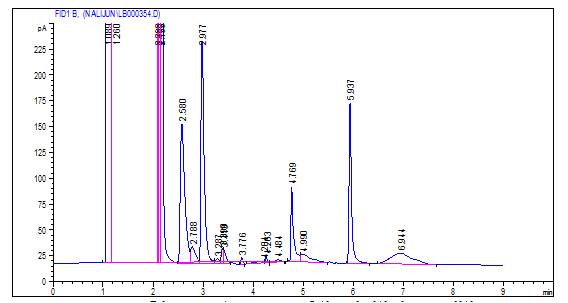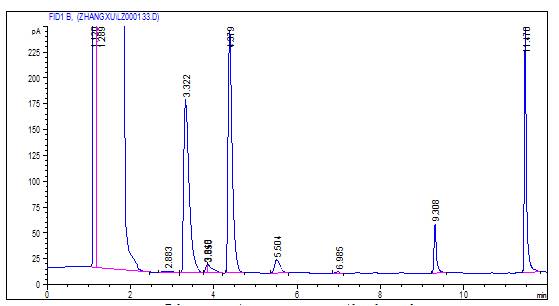|
Introduction
There are lots of PAEs in dust, air, clothes, polluted water of industries, river, soil and other solid waste.It is also detected in food, drinking water and even in body fluid. According to the experiments performed on animals and on human beings, people started to understand the acute toxicity of PAES on reproduction and mental development carcinogenicity, mutagenicity, teratogenicity.
GC was used for simultaneous determination of several phthalic acid esters homologues, including dimethyl phthalate ester (DMP), diethyl phthalate ester (DEP), benzyl-n-butyl phthalate ester (BBP), and di-n-octyl phthalate (DNOP). The sample dissolved in methanol was quantified by external standardization method using a capillary GC column with a flame ionization detector. The advantage of the method are that it is simple, fast, low cost and highly reliable.
Experimental conditions
After research and many experiments, the optimal conditions for the chromatography analyses were: Column temperature: 150°C maintained 1 min, at 60 °C/min rate increased to 240°C maintained for 1 min, then at 40°C/min rate increased 260°C maintained for 5 min.
Injection port temperature: 250°C, manual splitless.
FID detector temperature: 300℃.Hydrogen: 30.0mL/min Air: 300mL/min Nitrogen: 25.0mL/min. Injection volume: 1μL. The equations for linear regression calibration curves of DMP, DEP, BBP, and DNOP were y=14.848x-7.4003(R2=0.9969), y=15.903x-17.244(R2=0.9977), y=8.6642x-45.577(R2=0.9982) and y=1.9244x-5.888(R2=0.9949) respectively. Detection limits for each compound were respectively: 1.0×10-3μg/mL, 9.4×10-4μg/mL, 1.7×10-3μg/mL, 7.8×10-3μg/mL.
Two different levels of standard additions were added individually to standard mixture solutions of PAES, and at each level five replicate samples.The average recoveries of the spiked samples were 81.04~88.7% (DMP), 88.6~88.76% (DEP), 82.28~88.28% (BBP),and 81.92~87.5%(DNOP), and relative standard deviations were respectively 2.2%~2.6%, 3.2%~3.7%, 3.5%~3.6% and 2.1 %~2.6% .
Results
We see from the figure that the phthalates were excellently separated. The detection limits, average recoveries of the spiked sampmes and relative standard deviations gave satisfactory results.
Conclusion
This method is simple, fast, accurate and is appliable for the determination of phthalates in small quantity of children’s clothing.
|
|

Chromatogram of the initial conditions

Chromatograms optimized
|




